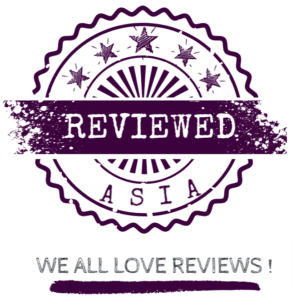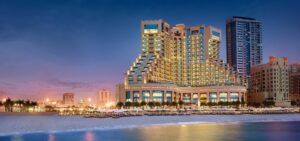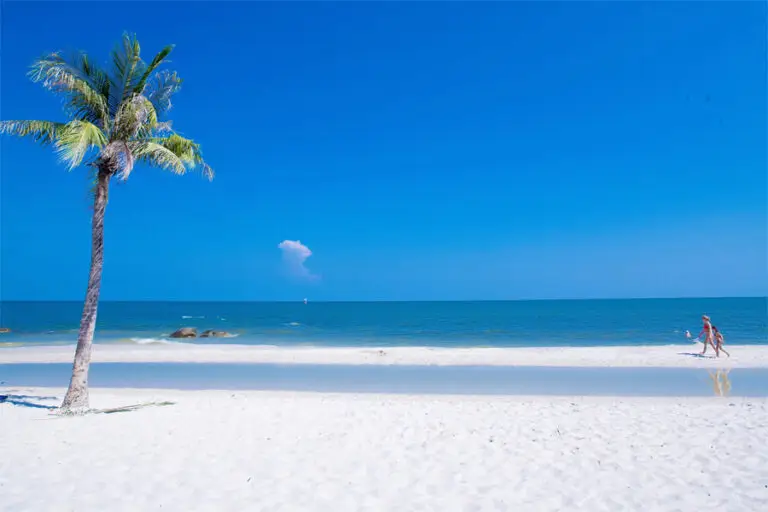The Philippines Islands: A Paradise Archipelago
The Philippines is an archipelago in Southeast Asia consisting of over 7,000 islands. It’s known for its stunning beaches, crystal-clear waters, diverse marine life, and rich history and culture.

1. Overview:
Geography and Landscape: The Philippines, located in the western Pacific Ocean, is an archipelago comprising over 7,000 islands. These islands are categorized under three main geographical divisions: Luzon, Visayas, and Mindanao. The country’s topography is diverse, featuring mountain ranges, valleys, plateaus, and coastal plains. Many of the islands are characterized by volcanic origins, with active volcanoes such as Mayon, Taal, and Pinatubo.
Stunning Beaches: The Philippines is globally renowned for its pristine beaches. From the powdery white sands of Boracay to the tranquil shores of Palawan, each island offers a unique beach experience. The Pink Beach of Zamboanga and the pebbled shores of Batanes are among the lesser-known gems.
Crystal-Clear Waters: The surrounding seas of the Philippines are a diver’s paradise. With one of the longest coastlines in the world, the country boasts numerous diving spots, including the Tubbataha Reefs Natural Park, a UNESCO World Heritage site. These waters are home to vibrant coral reefs teeming with marine biodiversity.
Diverse Marine Life: The Philippines lies in the Coral Triangle, making it a hotspot for marine biodiversity. Divers and snorkelers can witness a myriad of marine species, from colorful coral gardens to the rare thresher sharks and the gentle whale sharks. The country also takes pride in its marine sanctuaries that aim to preserve and protect its underwater treasures.
Rich History and Culture: The Philippines has a tapestry of cultures influenced by its indigenous tribes, as well as Spanish, American, Chinese, and Malay heritage. This blend is evident in its architecture, festivals, and traditions. Historical sites like the walled city of Intramuros in Manila and the Baroque churches in various provinces reflect its colonial past. Meanwhile, indigenous communities such as the Ifugao in the Cordilleras continue to practice age-old traditions and rituals.
Culinary Delights: Filipino cuisine is a testament to the country’s cultural amalgamation. Dishes like Adobo, Sinigang, and Lechon are staples in local feasts. The country is also known for its sweet delicacies like Halo-Halo and Leche Flan.
People and Hospitality: Filipinos are known for their warmth and hospitality. Visitors often feel at home due to the welcoming nature of the locals. The Filipino spirit of “Bayanihan” – helping one another – is deeply ingrained in the culture.
2. Major Islands and Regions:
Luzon:
-
Geography: Luzon is the northernmost and largest island of the Philippines. It is divided into several regions, including Ilocos, Central Luzon, CALABARZON, and the National Capital Region.
-
Manila: The bustling capital city, Manila, is the heart of the country’s political, economic, and cultural activities. It houses historical landmarks like Intramuros, Rizal Park, and the National Museum.
-
Natural Wonders: Luzon is home to the majestic Banaue Rice Terraces, a UNESCO World Heritage site, and the picturesque Mount Pinatubo, known for its stunning crater lake.
-
Other Highlights: The region also boasts beautiful beaches like those in La Union and Zambales, and cool highlands like Baguio and Tagaytay.
Visayas:
-
Geography: The Visayas is an archipelago situated in the central Philippines, comprising several major islands like Panay, Negros, Cebu, Bohol, Leyte, and Samar.
-
Popular Destinations:
- Cebu: Known for its historical sites like Magellan’s Cross and beautiful beaches in Moalboal and Bantayan.
- Bohol: Famous for the Chocolate Hills, tarsier sanctuary, and the Loboc River.
- Boracay: A world-renowned island paradise known for its powdery white sand and vibrant nightlife.
-
Culture and Festivals: The region celebrates colorful festivals like Sinulog in Cebu and Ati-Atihan in Kalibo. These events showcase the area’s rich cultural heritage and vibrant spirit.
Mindanao:
-
Geography: Mindanao is the second-largest island in the Philippines, located in the southern part of the country. It consists of several regions, including Northern Mindanao, Davao, SOCCSKSARGEN, and the Autonomous Region in Muslim Mindanao (ARMM).
-
Natural Beauty: The island boasts diverse landscapes, from the serene Lake Lanao to the enchanting Enchanted River. Mount Apo, the country’s highest peak, is a favorite among trekkers and mountaineers.
-
Cultural Diversity: Mindanao is a melting pot of cultures, with a significant Muslim population. The region is known for its indigenous tribes like the T’boli, Maranao, and Manobo, each with its unique traditions and crafts.
-
Other Highlights: The region also offers pristine beaches in places like Samal Island and Camiguin, as well as eco-adventures in places like Cagayan de Oro’s white-water rafting.
3. Must-Visit Destinations:
Palawan:
-
Overview: Palawan, dubbed as the “Philippines’ Last Frontier,” is a slender island province that stretches between Mindoro and Borneo. It’s renowned for its untouched natural beauty, crystal-clear waters, and rich biodiversity.
-
El Nido: A picturesque town located in the northern part of Palawan. It’s famous for its limestone cliffs, hidden lagoons, and enchanting island-hopping destinations like the Big Lagoon, Small Lagoon, and Secret Beach.
-
Coron: Situated in the northern tip of Palawan, Coron is a haven for divers. It’s known for its captivating underwater scenery, including sunken Japanese warships from World War II, vibrant coral gardens, and the mesmerizing Barracuda Lake.
-
Puerto Princesa Underground River: A UNESCO World Heritage site, this subterranean river boasts a unique ecosystem with impressive limestone formations, stalactites, and stalagmites. A boat tour inside the cave offers a surreal experience.
Boracay:
-
Overview: Located in the Western Visayas region, Boracay is a small island known worldwide for its pristine beaches and electric atmosphere.
-
White Beach: The island’s main attraction, White Beach, is a 4-kilometer stretch of powdery white sand and azure waters. It’s divided into Stations 1, 2, and 3, each offering a distinct vibe.
-
Nightlife: As the sun sets, Boracay comes alive with beachfront parties, fire dancing shows, and live music. The island boasts a plethora of bars, clubs, and restaurants catering to every taste.
-
Water Activities: Beyond lounging on the beach, visitors can indulge in various water sports such as parasailing, jet skiing, and paddleboarding.
Siargao:
-
Overview: Located in the eastern part of the Philippines, Siargao is an island known for its teardrop shape, coconut palm forests, and world-class surf breaks.
-
Cloud 9: Renowned as one of the best surf spots globally, Cloud 9 attracts surfers from all over the world. The annual Siargao Cup, a surfing competition, is held here.
-
Island Hopping: Siargao is surrounded by smaller islands and sandbars. Popular destinations include Guyam Island, Daku Island, and the Naked Island.
-
Laid-back Atmosphere: Beyond the waves, Siargao offers a relaxed vibe, with its rustic accommodations, beachfront hammocks, and local eateries serving fresh seafood and Filipino delicacies.
4. Activities:
Diving and Snorkeling:
-
Overview: The Philippines, being an archipelago, offers a plethora of diving and snorkeling sites with rich marine biodiversity, vibrant coral reefs, and clear blue waters.
-
Tubbataha Reefs Natural Park: Located in the Sulu Sea, this UNESCO World Heritage site is a diver’s paradise. It boasts two atolls teeming with marine life, including sharks, turtles, and manta rays. The best time to dive here is between March and June.
-
Apo Reef: Situated off the coast of Mindoro, Apo Reef is the second-largest contiguous coral reef in the world. It’s a haven for divers, offering a mix of coral gardens, drop-offs, and a diverse range of marine species.
-
Other Notable Sites: Beyond Tubbataha and Apo, the Philippines has numerous other diving spots like Anilao in Batangas, Malapascua Island in Cebu, and the wrecks in Coron.
Island Hopping:
-
Overview: With over 7,000 islands, the Philippines offers endless opportunities for island hopping, allowing visitors to discover secluded beaches, crystal-clear lagoons, and vibrant marine sanctuaries.
-
El Nido and Coron: Palawan’s gems, these destinations offer a range of island-hopping tours that cover hidden lagoons, secret beaches, and snorkeling spots.
-
Caramoan Islands: Located in Camarines Sur, these islands offer pristine beaches and limestone cliffs, making it a favorite location for international reality shows.
-
Siargao: Beyond surfing, Siargao offers island-hopping to nearby islets like Guyam, Daku, and Naked Island.
Cultural Tours:
-
Overview: The Philippines, with its rich history and diverse culture, offers numerous sites that reflect its heritage and traditions.
-
Intramuros: Located in Manila, Intramuros, also known as the “Walled City,” is a historical fortress that tells the tale of the Philippines’ Spanish colonial era. Key attractions include Fort Santiago, San Agustin Church, and Manila Cathedral.
-
Chocolate Hills: Situated in Bohol, the Chocolate Hills are a geological wonder comprising over 1,200 perfectly cone-shaped hills. While they are green during the rainy season, they turn brown during the dry season, resembling chocolate mounds.
-
Other Historical Sites: Beyond Intramuros and Chocolate Hills, visitors can explore sites like Rizal Park in Manila, the heritage houses in Vigan, and the Sunken Cemetery in Camiguin.
5. Local Cuisine:
Adobo:
-
Overview: Adobo, often considered the unofficial national dish of the Philippines, is a testament to the country’s culinary heritage. Its name is derived from the Spanish word “adobar,” meaning “marinade.”
-
Ingredients: The dish primarily consists of chicken, pork, or a combination of both, marinated in a mixture of vinegar, soy sauce, garlic, bay leaves, and black peppercorns.
-
Cooking Method: After marinating, the meat is simmered in the marinade until tender. It’s then browned in oil, creating a dish that’s both tangy and savory. Some variations include adding coconut milk or hard-boiled eggs.
-
Pairing: Adobo is best enjoyed with steamed rice, which complements its rich flavors.
Sinigang:
-
Overview: Sinigang is a beloved Filipino soup characterized by its tangy and sour flavor, primarily derived from tamarind.
-
Ingredients: The soup can be made with various proteins, including pork, beef, shrimp, or fish. It’s also loaded with vegetables like radish, eggplant, string beans, and kangkong (water spinach).
-
Variations: While tamarind is the most common souring agent, other versions use green mangoes, calamansi (local lime), or green tomatoes.
-
Serving: Sinigang is typically served hot with steamed rice and a side of fish sauce for added seasoning.
Halo-Halo:
-
Overview: Halo-Halo, which translates to “mix-mix,” is a colorful and delightful dessert that offers a medley of flavors and textures.
-
Ingredients: The dessert comprises a base of crushed ice layered with various ingredients like sweetened bananas, jackfruit, sweet potato, leche flan (caramel custard), and purple yam (ube). It also includes sweet beans like red beans, white beans, and garbanzos.
-
Toppings: The concoction is topped with a scoop of ube ice cream and a drizzle of condensed milk.
-
Serving: It’s served in a tall glass or bowl, and the fun lies in mixing all the ingredients together before digging in.
6. Travel Tips:
Weather:
-
Overview: The Philippines experiences a tropical maritime climate, which means it’s warm and humid throughout the year.
-
Dry Season: Running from November to April, the dry season is characterized by clear skies and sunny days. This period is ideal for beach outings, island hopping, and outdoor activities.
-
Wet Season: From May to October, the country experiences the wet season with frequent rain showers and potential typhoons. While it’s less ideal for beach activities, it’s a great time to explore the country’s lush landscapes and waterfalls.
-
Packing Tips: Lightweight clothing, sunscreen, and a good pair of sandals are essential. If traveling during the wet season, don’t forget a raincoat or umbrella.
Currency:
-
Overview: The Philippine Peso (PHP) is the country’s official currency. Coins come in denominations of 1, 5, 10, and 25 centavos, and 1, 5, 10, 20, 50, and 100 pesos. Notes range from 20 to 1,000 pesos.
-
Exchanging Money: It’s advisable to exchange currency at banks, authorized money changers, or hotels for the best rates. ATMs are widely available in cities and tourist areas.
-
Tipping: While not mandatory, tipping is appreciated for good service in restaurants, hotels, and taxis.
Language:
-
Overview: The Philippines is a linguistic treasure trove, with a rich tapestry of languages and dialects.
-
Official Languages: Filipino, based on Tagalog, and English are the official languages. English is widely spoken, especially in business, education, and tourist areas.
-
Regional Languages: With over 170 languages, travelers might encounter regional languages like Cebuano, Ilocano, and Waray, especially in provincial areas.
7. Safety:
General Safety:
-
Overview: The Philippines is a popular tourist destination, and while it’s generally safe, travelers should exercise standard precautions.
-
Travel Advisories: Before traveling, it’s wise to check travel advisories from your home country’s embassy or consulate regarding any specific areas to avoid.
-
Crowded Areas: In busy areas like markets, bus stations, and popular tourist spots, be vigilant against pickpockets. It’s advisable to use anti-theft bags and keep valuables close.
Health Precautions:
-
Vaccinations: Ensure you’re up-to-date with routine vaccines. Depending on your travel plans, you might also consider vaccines for Hepatitis A, Typhoid, and Yellow Fever.
-
Water: Drinking tap water isn’t recommended. Opt for bottled water, and avoid ice in drinks unless you’re sure it’s from a clean source.
Emergency Contacts:
-
Police: Dial 117 for emergencies.
-
Hospitals: Major cities have well-equipped hospitals, but it’s a good idea to have travel insurance in case of unexpected medical expenses.
Conclusion:
The Philippines, with its sprawling archipelago, offers a unique blend of natural wonders, rich history, and vibrant culture. From the pristine beaches of Palawan to the bustling streets of Manila, every island tells a story waiting to be discovered.
The country’s diverse culinary delights, myriad of languages, and warm Filipino hospitality make it a must-visit destination for travelers seeking an authentic and unforgettable experience. As with any journey, being well-informed and taking necessary precautions ensures a trip that’s not only enjoyable but also safe.
Whether you’re a seasoned traveler or a first-time visitor, the Philippines promises a treasure trove of adventures that will leave you with memories to cherish for a lifetime.









